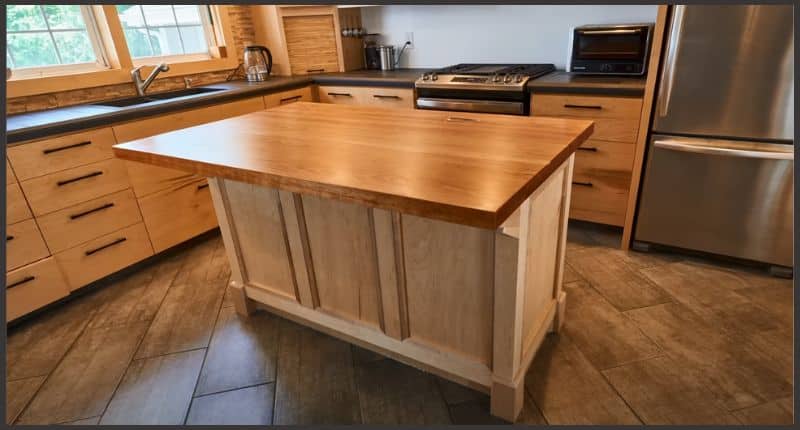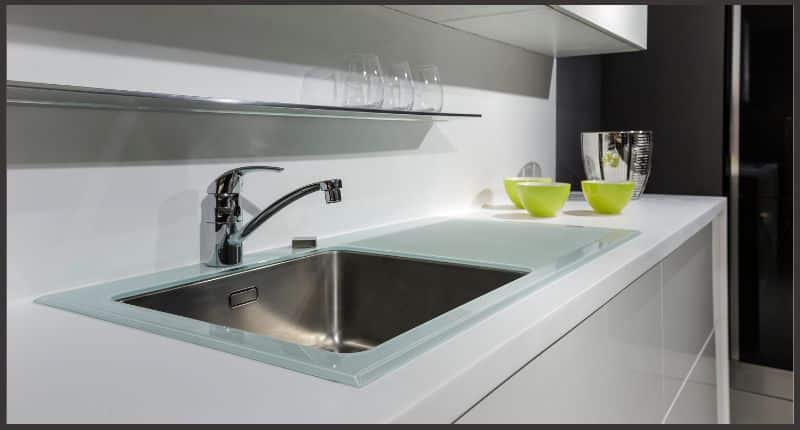Welcome to our collection of essential kitchen tips for the home! Whether you’re a cooking enthusiast or just starting your culinary journey, this compilation of expert advice and practical tips will help you navigate the kitchen with confidence. From mastering basic cooking techniques to organizing your pantry efficiently, we’ve got you covered. Discover helpful time-saving hacks, essential utensils, and clever kitchen hacks that will make your cooking experience seamless and enjoyable. So, whether you’re looking to whip up a quick weeknight dinner or impress your guests with a gourmet feast, join us as we unlock the secrets to a well-equipped and efficient kitchen.
Table of Contents
Kitchen Tips for the Home: Create a Culinary Haven
Are you ready to unleash your inner chef? The kitchen is the heart of every home, where memories are made, and delicious meals are created. But it can also be a daunting and chaotic space, especially for those who lack culinary confidence. Fear not! In this comprehensive guide, we will explore a treasure trove of kitchen tips and tricks that will transform your kitchen into a culinary haven. From organizing your pantry to mastering essential cooking techniques, let’s dive in and conquer the kitchen!
Organizing Your Kitchen: A Place for Everything
The first step in creating a functional kitchen is organization. A clutter-free space not only enhances efficiency but also brings peace of mind. Let’s start by decluttering your pantry.
Decluttering and Organizing Your Pantry
Step into your pantry and assess the chaos. Expired goods, forgotten items, and half-empty packages can run amok in an unorganized pantry. Begin by removing everything from the shelves and sorting them into categories: grains, canned goods, spices, and so on. Discard any expired or stale items. Now, it’s time to get creative with storage solutions.
Invest in stackable clear containers for storing grains, pasta, and cereal. Not only do they lend a chic look to your pantry, but they also keep items fresh and easily visible. Don’t forget to label each container to avoid any confusion.
Hanging baskets or wire racks are perfect for storing onions, potatoes, and other produce. They free up valuable counter space and prevent your veggies from rotting. Plus, they add a touch of visual appeal to your pantry.
Now that your pantry is in order, let’s move on to the rest of the kitchen.
Creating Zones in Your Kitchen
A well-organized kitchen is divided into zones, ensuring everything is within reach. Consider these essential zones:
Preparation Zone
Designate a space near the sink and cutting board as your preparation zone. Keep your knives, cutting boards, and utensils within arm’s reach. This setup improves efficiency by minimizing steps during meal prep.
Cooking Zone
The cooking zone is where the magic happens! Keep your pots, pans, and cooking utensils in a cabinet near the stove. Hang frequently used utensils on hooks for easy access. This way, you’ll always be ready to whip up a culinary masterpiece.
Baking Zone
If baking is your passion, dedicate a zone to all your baking essentials. From measuring cups to mixing bowls, keep everything in one area. This way, you won’t find yourself rummaging through cabinets in search of that elusive whisk.
Serving Zone
After all your hard work in the kitchen, a dedicated serving zone can make all the difference. Keep your platters, serving bowls, and utensils in one place for effortless entertaining. Bonus tip: set up a beverage station nearby for hosting impromptu gatherings.
By creating specific zones in your kitchen, you’ll streamline meal preparation and make cooking a breeze.
Mastering Essential Cooking Techniques
Now that your kitchen is beautifully organized, it’s time to elevate your culinary skills. These essential cooking techniques will help you wow your family and friends with delicious dishes.
Searing: The Key to Flavorful Meats
The art of searing is essential for achieving a beautiful caramelized crust on meats. Before cooking, pat your meat dry and season generously. Heat your pan over high heat, add a drizzle of oil, and sear the meat until a golden-brown crust forms. This technique locks in juices and enhances flavor.
Chef Maria Ramirez, a renowned culinary expert, says, Searing creates flavor compounds through the Maillard reaction, resulting in a depth of flavor that is unmatched.
Braise: Tenderize and Infuse Flavor
Braising is a cooking method that involves searing meat and then slow-cooking it in a liquid until tender. The low, slow cooking process breaks down tough connective tissues and infuses the meat with delicious flavors.
Chef Adrian Petersen, known for his succulent braised dishes, recommends, Choose tougher cuts of meat, like beef chuck or pork shoulder, and cook them gently in broth or wine for several hours. The result is fall-off-the-bone goodness.
Whisking: Achieve Perfectly Smooth Sauces
A silky smooth sauce can elevate any dish to gourmet status. The secret lies in whisking. Whether you’re making a classic béchamel or a tangy vinaigrette, whisking gradually incorporates ingredients, preventing lumps and creating a velvety texture.
Chef Julia Martinez, a master of sauces, emphasizes, Take your time when whisking and adjust the heat. This ensures your sauces are velvety-smooth and won’t have that dreaded grainy texture.
Roasting: Brings Out Intense Flavors
Roasting is a versatile cooking technique that adds depth of flavor to everything from vegetables to meats. The dry heat concentrates flavors, resulting in a caramelized exterior and tender interior.
Chef Michael Thompson, known for his tantalizing roasted dishes, advises, Preheat your oven to a high temperature, spread your ingredients in a single layer on a baking sheet, and roast until golden and fragrant. The natural sugars caramelize, creating a symphony of flavors.
Addressing Common Kitchen Conundrums
Even the most seasoned home cooks face culinary challenges from time to time. Let’s tackle some common kitchen conundrums and find simple solutions.
Burning, Sticking, and Scorching
Have you ever burned your perfectly cooked dish or dealt with sticking and scorching in your pans? Fear not, as there are simple solutions. When cooking on high heat, always keep an eye on your food to prevent burning. Use non-stick cookware or pre-heat your stainless steel pan properly before adding ingredients to avoid sticking.
Soggy Vegetables
Soggy vegetables can be a disappointment. To ensure your veggies remain crisp and vibrant, cook them quickly in a hot pan or steam them for a short amount of time. Shocking blanched veggies in ice water also helps retain their crunch.
Over-seasoned Dishes
We’ve all been guilty of adding a heavy hand of salt or spices, resulting in an over-seasoned dish. To balance the flavors, try diluting the dish with unsalted broth or a squeeze of citrus juice. You can also add a small amount of honey or sugar to mellow out the intensity.
Recipe Mishaps
Recipe mishaps are part of the cooking journey. If you find yourself with a failed dish, don’t despair. Let your culinary creativity shine! Experiment with different herbs, spices, or sauces to salvage the flavors. Who knows, you might stumble upon a delicious new creation.
The Kitchen: A Place for Creativity and Connection
Beyond its functional aspects, the kitchen holds a special place in our hearts. It is a place where traditions are passed down, stories are shared, and memories are created. No matter your skill level, the kitchen is a canvas for creativity and connection.
As Chef Anthony Bourdain famously said, Your body is not a temple, it’s an amusement park. Enjoy the ride. Embrace the joy of cooking, experiment with flavors, and savor the delicious results.
In Conclusion
With these kitchen tips and techniques up your sleeve, you are well on your way to becoming a kitchen maestro. Remember to declutter and organize your pantry, create zones for efficiency, and master essential cooking techniques. Don’t be afraid to tackle common kitchen conundrums, and never forget the true essence of the kitchen: creativity and connection. So, put on your apron, sharpen your knives, and let the culinary adventure begin!

Photo by Lauren Mancke on Unsplash
Additional Guide
Here are three internal links related to the article Kitchen tips for the Home:
1. How to Make a Small Kitchen Look Bigger: This article provides practical tips and tricks for maximizing space and creating the illusion of a larger kitchen.
2. How Do I Start a Small Kitchen?: This article offers guidance on how to efficiently organize and set up a small kitchen space for optimal functionality.
3. Things to Consider When Designing a Kitchen: This article explores key factors to keep in mind when planning a kitchen layout and design, including storage options, layout efficiency, and appliance choices.
These internal links will provide readers with additional relevant information and resources to further enhance their kitchen experience.
FAQs: Kitchen tips for the Home
1. What are some essential kitchen tools every home should have?
Some essential kitchen tools every home should have include a chef’s knife, cutting board, measuring cups and spoons, mixing bowls, a can opener, a blender or food processor, and a set of pots and pans.
2. How can I make my fruits and vegetables last longer?
To make your fruits and vegetables last longer, store them properly. Keep fruits in the fridge, except for bananas which are best stored at room temperature. Vegetables can be stored in the crisper drawer of your refrigerator, and leafy greens can be wrapped in paper towels to absorb excess moisture. Additionally, avoid washing fruits and vegetables until you are ready to use them.
3. What is the best way to remove stubborn stains from pans?
To remove stubborn stains from pans, create a paste with equal parts baking soda and water. Apply the paste to the stained area and let it sit for 15-20 minutes. Then, scrub the pan with a non-abrasive sponge or brush. Rinse thoroughly with warm water. For tougher stains, you can also try simmering a mixture of water and vinegar in the pan before scrubbing.
4. How do I prevent my cutting board from slipping during use?
To prevent your cutting board from slipping during use, simply place a damp kitchen towel or a non-slip mat underneath it. This will provide some traction and keep the board securely in place, allowing you to cut and chop ingredients safely.


